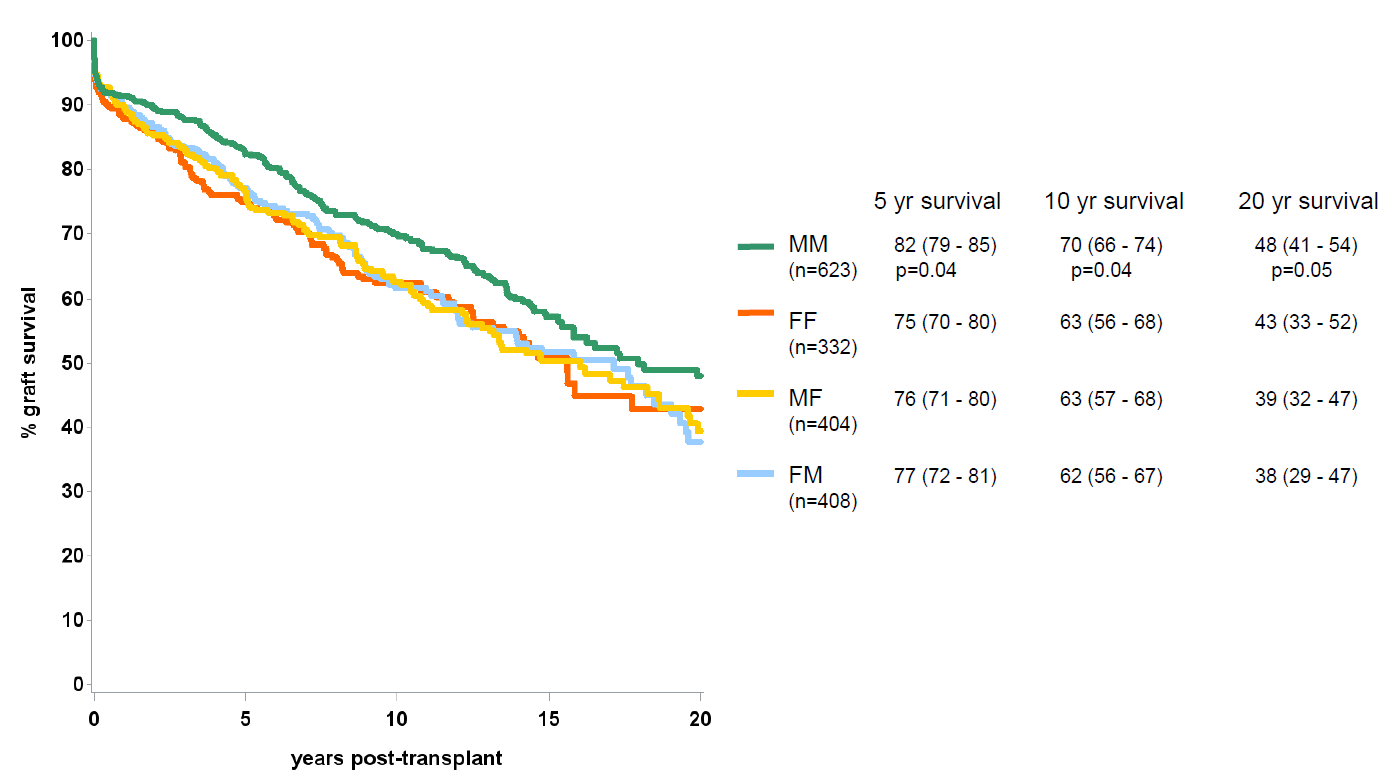Superior Renal Allograft Function with Male Deceased Donors for Paediatric Renal Transplant Recipients
Nadeesha Mudalige1, Kate Martin2, Stephen D Marks1,3.
1University College London Great Ormond Street, Institute of Child Health, London, United Kingdom; 2NHS Blood and Transplant, National Health Service, Bristol, United Kingdom; 3Paediatric Nephrology, Great Ormond Street Hospital for Children NHS Foundation Trust, London, United Kingdom
Introduction: Renal transplantation continues to improve the quality of life for children with end stage kidney disease and the policies surrounding allograft allocation have altered over time with the aim of improving patient and renal allograft survival. This study explored whether certain donor-recipient gender pairs are associated with a greater renal allograft survival than others.
Methods: A twenty year, retrospective survival analysis of all paediatric (<18 years of age), single kidney, donation following brain death (DBD) tranplant procedures performed in the United Kingdom between January 1996 and December 2016, from registry data held by the National Health Service Blood and Transplant service (NHSBT). Kaplan Meyer survival curves were synthesized for all donor:recipient gender combinations and analysis of variance to determine significant differences between groups. Renal allograft survival was defined as time from transplantation to graft failure, re-transplantation or patient death.
Results: Between January 1996 and December 2016, 1,767 single kidney, DCD, paediatric transplant procedures were performed. The majority of transplants took place from a male donor to male recipient (623; 35%), followed by female to male (408; 23%), male to female (404; 23%) and female to female (332; 19%). Survival analyses showed that male to male transplants were associated with superior renal allograft survival when compared to all other gender combinations (Figure 1), at five, ten and twenty years (82%, 70% and 48% respectively, p<0.05)
Discussion: A consistently superior renal allograft survival is observed for male to male deceased donor transplants at all time points following engraftment, which may be considered when preferentially allocating deceased donor grafts.
